Solar cells, also known as photovoltaic cells, play a central role in harnessing solar energy and converting it into electricity. As the demand for clean and sustainable energy grows, ongoing research focuses on enhancing the efficiency and cost-effectiveness of solar cells.
Working Principle
Solar cells operate based on the photovoltaic effect, a process that converts sunlight into electrical energy. The semiconductor material, typically silicon, absorbs photons from sunlight, initiating the generation of electron-hole pairs through photoexcitation. An electric field is then formed within the semiconductor, directing the movement of electrons towards the n-type side and holes towards the p-type side. Metal contacts on the n-type side act as electron collectors, facilitating the flow of electrons through an external circuit, generating a usable electrical current. The circuit is completed as electrons return to the p-type side. This movement of electrons results in the generation of direct current (DC), the form of electricity utilized in various applications. Overall, the working principle of solar cells hinges on the efficient conversion of sunlight into electrical energy through the controlled movement of electron-hole pairs.
Structure and Composition
The structure of solar cells is designed to facilitate the efficient generation and collection of electric charge carriers. It begins with a silicon substrate, serving as the foundation for energy conversion layers. On the top surface, a conductive front contact grid, often made of metal, establishes the pathway for the generated electric current. To enhance light absorption, an anti-reflective coating is applied, minimizing sunlight reflection. The heart of the solar cell is the p-n junction, the boundary between positive (p-type) and negative (n-type) semiconductor layers, crucial for charge carrier separation. The p-type layer has an excess of positive charge carriers (holes), while the adjacent n-type layer has an excess of negative charge carriers (electrons). A back surface field may be employed to improve charge carrier collection. The back contact, usually made of aluminum, serves as the negative terminal. Some designs include an emitter layer on the front surface to facilitate charge carrier movement. A passivation layer enhances stability, and encapsulation protects the cell from external elements. The backsheet, typically made of polymer, shields the rear, and a frame with tempered glass provides mechanical support and durability.
Innovative Design and Engineering in Solar Cells
Quantum Dots and Nanomaterials
The integration of quantum dots and nanomaterials into solar cells marks a groundbreaking stride in advancing photovoltaic technology. Quantum dots, semiconductor nanocrystals with unique electronic and optical properties, offer precise control over material behavior at the nanoscale. When incorporated into solar cells, quantum dots enhance light absorption and facilitate efficient electron transport. This integration expands the absorption spectrum, enabling solar cells to harness a broader range of sunlight wavelengths. Additionally, nanomaterials, such as nanowires and nanotubes, exhibit exceptional electrical and thermal properties. When strategically integrated into the structure of solar cells, these nanomaterials enhance charge carrier mobility and facilitate faster electron transport, mitigating resistive losses. The synergistic combination of quantum dots and nanomaterials not only enhances the efficiency of solar cells but also opens avenues for designing flexible and transparent photovoltaic devices. The precise engineering of these nanoscale components exemplifies a paradigm shift in solar cell technology, promising improved performance and paving the way for the next generation of high-efficiency, lightweight, and adaptable solar energy systems.
Tandem Solar Cells
Tandem solar cells represent a pinnacle in solar cell design, engineered to achieve higher efficiency by integrating multiple layers of photovoltaic materials with distinct absorption spectra. The tandem configuration allows each layer to capture sunlight at specific wavelengths, optimizing the overall energy conversion process. This intricate design involves careful consideration of the bandgaps of each material to ensure complementary absorption and efficient utilization of the solar spectrum. Engineering tandem structures requires precise control over layer thickness, material composition, and the alignment of energy levels to maximize the tandem cell’s performance. The innovation lies in the strategic combination of materials, demonstrating how thoughtful design and engineering can push the efficiency boundaries of solar cells beyond what traditional single-layer configurations can achieve.
Bifacial Solar Cells
Bifacial solar cells epitomize an innovative approach to solar cell design, engineered to capture sunlight from both the front and rear sides. This dual-sided light absorption significantly enhances energy yield, particularly in environments with reflective surfaces, such as snow or light-colored rooftops. The design involves optimizing the cell’s transparency and incorporating rear-side contacts to facilitate charge collection. The engineering challenge lies in striking a balance between maintaining transparency for rear-side illumination and ensuring efficient light absorption from the front. Bifacial solar cells exemplify the intersection of design ingenuity and engineering precision, showcasing how rethinking the traditional unifacial structure can lead to substantial gains in overall energy conversion efficiency.
Transparent Solar Cells
The advent of transparent solar cells has transformed solar cell design paradigms, allowing for seamless integration into windows and other transparent surfaces. This design innovation involves the use of transparent conductive materials, such as thin layers of metal oxides, to maintain light-transmitting properties while harnessing solar energy. Transparent solar cells leverage advanced engineering techniques to balance optical transparency with electrical conductivity. The challenge lies in optimizing the thickness and composition of the transparent layers to achieve a harmonious blend of functionality and aesthetics. This design not only showcases engineering prowess but also expands the potential applications of solar technology, transforming conventional surfaces into energy-generating assets.
In the dynamic field of solar cells, the marriage of design principles and engineering precision plays a pivotal role in shaping the next generation of photovoltaic technologies. Tandem structures, bifacial configurations, and transparent designs exemplify how thoughtful engineering can unlock new levels of efficiency, adaptability, and integration, propelling solar cells toward a more sustainable and versatile future.
Latest Manufacturing Techniques
1. Silicon Solar Cells:
a. Heterojunction Technology:
Heterojunction technology involves layering amorphous silicon on top of crystalline silicon, minimizing energy losses and improving efficiency.
Advantages: Enhanced efficiency, reduced thermal losses, and improved performance in low-light conditions.
b. Passivated Emitter Rear Contact (PERC):
PERC technology introduces a passivation layer on the rear surface of the cell, reducing electron recombination and enhancing overall efficiency.
Advantages: Improved energy yield, higher conversion efficiency, and enhanced temperature tolerance.
2. Thin-Film Solar Cells:
a. Cadmium Telluride (CdTe):
CdTe thin-film technology uses a thin layer of cadmium telluride as the absorber material, offering a cost-effective alternative to traditional silicon.
Advantages: Lower manufacturing costs, shorter energy payback time, and suitability for large-scale installations.
b. Copper Indium Gallium Selenide (CIGS):
Description: CIGS thin-film technology utilizes a compound of copper, indium, gallium, and selenium, providing flexibility for application on various surfaces.
Advantages: Improved efficiency, flexibility, and potential for lightweight, flexible solar panels.
3. Perovskite Solar Cells:
a. Solution Processing:
Perovskite solar cells are manufactured using solution-based deposition techniques like spin coating and inkjet printing, allowing for scalable and cost-effective production.
Advantages: Rapid fabrication, potential for low-cost manufacturing, and suitability for flexible and lightweight applications.
b. Tandem Configurations:
Tandem solar cells combine perovskite layers with traditional materials like silicon to achieve higher overall efficiency by harnessing the complementary properties of each material.
Advantages: Enhanced efficiency, improved stability, and expanded application possibilities.
4. Advanced Silicon Solar Cells:
a. Topcon (Tunnel Oxide Passivated Contact):
Topcon technology involves the use of a tunnel oxide layer, reducing electron-hole recombination and enhancing the overall efficiency of silicon solar cells.
Advantages: Improved passivation, enhanced conversion efficiency, and potential for cost-effective manufacturing.
b. N-Type Solar Cells:
N-type solar cells use an N-type semiconductor as the absorbing material, offering advantages in terms of reduced degradation and improved temperature stability.
Advantages: Higher temperature tolerance, lower degradation rates, and potential for increased energy yield.
5. Tandem Organic Solar Cells:
Tandem organic solar cells stack multiple layers of organic materials with different absorption spectra, aiming for improved efficiency and broader light absorption.
Advantages: Enhanced light absorption, potential for flexible and lightweight applications, and utilization of sustainable organic materials.
6. Bifacial Solar Cells:
Bifacial solar cells capture sunlight from both the front and rear sides, utilizing reflected sunlight to increase overall energy yield.
Advantages: Improved energy capture, suitability for various environments, and potential for increased energy production in certain conditions.
In conclusion, the ongoing advancements in solar cell technology, encompassing innovative designs and cutting-edge manufacturing techniques, underscore the industry’s commitment to enhancing efficiency, adaptability, and sustainability. From the precise engineering of quantum dots and nanomaterials to the transformative potential of tandem and bifacial solar cells, each development contributes to a cleaner and more integrated solar future. As silicon, thin-film, and perovskite technologies continue to evolve, the convergence of scientific principles and engineering precision propels solar cells beyond traditional efficiency boundaries. These strides not only optimize energy conversion but also envision a world where solar seamlessly integrates into everyday surfaces, reshaping the landscape of renewable energy and driving us toward a more resilient and sustainable future.



